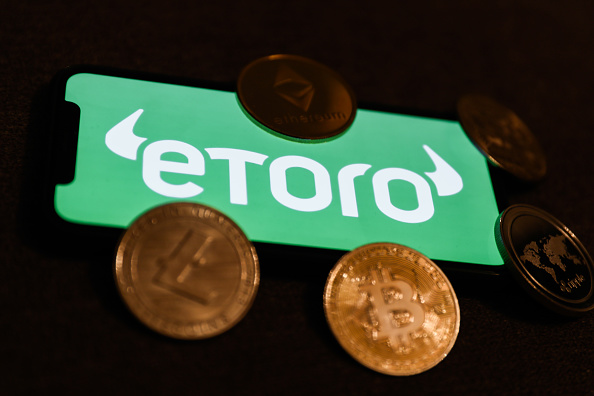eToro, a trading platform, has announced a $20 million fund to buy NFTs and support inventors. The debut was unveiled Thursday at The Bass, a contemporary art museum in Miami.
The fund was established by the trading platform as part of a new project named eToro.art, which aims to assist NFT producers and brands.

According to Guy Hirsch, eToro’s US managing director, the new fund is the start of a larger NFT strategy for the company, which will eventually offer a variety of services to allow investors to engage in the growing economy.
Nonfungible tokens, or NFTs, are digital assets that reflect real-world goods that cannot be duplicated, such as art, music, real estate, and so on.
“Before, with bitcoin and ether, you had only the likes of Goldman Sachs or similar traditional financial players participating or looking at expanding into crypto,” Hirsch told CNBC. “NFTs are essentially making any and every potential brand a participant in this market.”
eToro displayed its digital art collection as part of its new initiative, which includes well-known initiatives such as the Bored Ape Yacht Club, CryptoPunks, and World of Women. eToro also wants to invest $10 million this year to help budding creators and companies bring their innovative NFT initiatives to market.

NFTs can be used for a variety of applications, including digital art. eToro plans to introduce capabilities that will expose users to use cases other than digital art, according to Hirsch.
Big businesses from every industry, including Coca-Cola, McDonald’s, Nike, Gucci, the National Football League, and others, have included NFTs into their marketing activities in the last few months.
“Any brand can home in on this and create some sort of an NFT that represents an ownership stake in part of the brand,” Hirsch added.
Appreciating Digital Art
Investors have struggled to recognise the value in digital art and have been perplexed by large sales, such as Beeple’s $69 million piece at Christie’s.
Price discovery and knowing what to buy in digital art are still huge questions, but Hirsch says the industry is working on it. The floor price, or the least amount of money you can spend to buy an item from a collection, is now commonly used by investors.

“It needs to be more sophisticated than that,” Hirsch said. “We see new services emerging that will be akin to the appraisal process of traditional art. Within a year or two we’ll have third-party services that will appraise individual pieces and give you an approximate price on what you’re about to buy or what you own in a way that would be agreed on by market participants.”
Hirsch remarked that art has been a solid asset class for decades, but exclusively for the ultra-wealthy. EToro wants to connect together young artists and investors to help them increase their fortune in a new way.
On OpenSea, the largest marketplace for NFTs, NFTs from some of eToro’s “blue-chip” projects are already selling for hundreds of thousands of dollars. That’s out of reach for most modest investors, but the company hopes that many of the lesser-known digital artists whose work it’ll assist bring to market won’t be as expensive as the Bored Ape collection, which has attracted celebrity customers.
“When these artists create a collection or NFT drop, the price on those would be quite low,” Hirsch said. “People would be able to participate, and if the community is strong and if the art is promising, it will appreciate in value, but the entry point would still be accessible to the everyday investor.”
“Some of them will, hopefully, reach the point of Bored Ape status,” he added. “Eventually, like the Bored Apes, that will create a lot of new millionaires, a lot of new wealth for people who didn’t have it before.”




